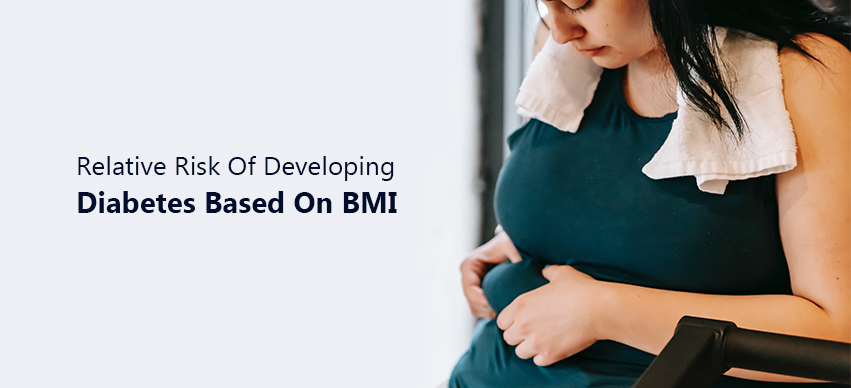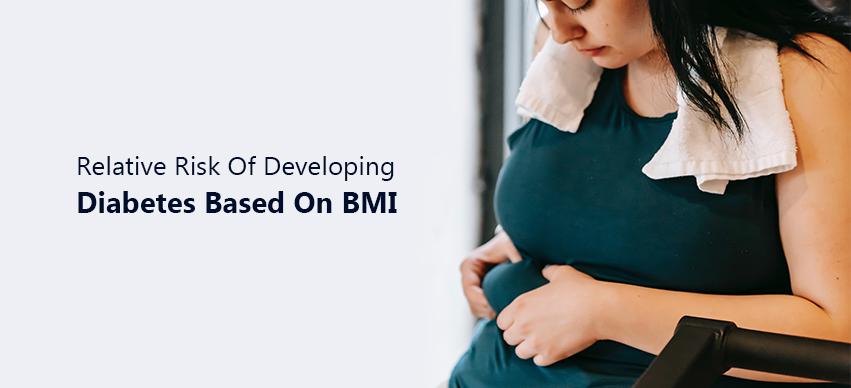What Comprehensive Oral Care Really Looks Like in Modern Den..
11 Min Read


Diabetes is becoming more prevalent across the globe with nearly 10 percent of adults. With over 420 million adults living with diabetes today, the disease is becoming a modern-day epidemic.
It affects people from all walks of life and is starting to become more common in children under the age of 18, especially in the United States. Diabetes can be caused by a number of factors but one area that is often linked with the disease is weight, obesity, and poor diet. How much of a link is there between body mass index, BMI, and the prospect of developing diabetes?
Many factors increase the chance of getting type 2 diabetes and some of these involve lifestyle choices. Some other factors are age, family history, and ethnicity with some people being more at risk due to their heritage.
Below are some of the factors that can mean people are more at risk of developing type 2 diabetes;
There are more but these are some of the ones that can increase the risk of diabetes.
Everyone knows that eating healthily and leading an active lifestyle is good for them. There would be very few people who would advocate that spending all their time watching movies and eating snacks is a healthy lifestyle.
This becomes more serious when you link this lifestyle to diabetes. A sedentary lifestyle can affect the risk factor of getting type 2 diabetes. There has been much research on this area and when you compute the risk ratio you can see the link between BMI and diabetes.
A study of 50,000 men in middle age with a BMI of 35 showed they had a relative risk of diabetes of 42 with a 95% confidence interval compared to a younger group of men with a BMI of less than 23.
The majority of people who develop the less serious type of diabetes are already obese or carrying extra weight. One report found that over 80% of people with type 2 diabetes had a BMI of over 25, making them medically obese.
There are several methods of treating diabetes. For patients with type 2, it is advised to change their lifestyle. If you have been diagnosed with type 2 diabetes then it would be recommended you change your diet, start exercising, stop smoking and reduce your alcohol intake.
Someone with type 1 diabetes would also need to change their lifestyle but additionally have blood sugar level monitoring and take insulin. The problem here is there is a risk of insulin overdose due to skipping meals or blood sugar levels not being monitored correctly.
The risk of not treating or taking a diabetes diagnosis seriously can mean a range of physical effects on the body. These include frequent urination to fatigue, or more seriously, heart disease, stroke, and premature death. If a diagnosis is ignored complications can lead to a loss of sight and amputations due to peripheral artery disease or PAD.
With all the talk about BMI, obesity, and the link to diabetes it is easy to imagine that only ‘overweight’ people will develop diabetes. The reality is that weight is only a piece of the problem.
Many people at a normal or average weight will also develop diabetes. Type 1 diabetes is often found in children of normal body mass. Even type 2 diabetes can develop in people who are of a regular weight according to their height. Around 10% of diabetes patients have a good BMI level. This is because there are other areas to consider.
You now know that family history, poor diet, inactivity, and also genetics can play a part in someone developing diabetes. But, there is also something called visceral fat.
When considering BMI and obesity you might picture a person carrying a lot of weight around their belly area or perhaps across their body in general. A ‘beer belly’ on a middle-aged man might be a sign of increased risk of diabetes and will certainly yield a high BMI. There is a different type of fat that is less visible though.
Visceral fat is not visible to the naked eye and instead of appearing under the skin in obvious places, it grows around your organs. So a person could be carrying a significant amount of fat around without it being visible meaning they are at risk of developing diabetes.
Diet, stress, and alcohol are all factors in people with a good BMI developing diabetes. There are some links between alcohol and diabetes. Consuming a small amount of alcohol can protect against the risk of diabetes but the relative risk of the disease increases as alcohol consumption increases.
Someone who over consumes alcohol frequently can develop fatty liver disease. A poor diet may not lead to obvious fat gains but may lead to visceral fat. Stress can take a toll on the human body and this, in turn, can lead to higher blood sugar levels.
All three of these things can increase your risk of developing diabetes as can poor sleep patterns.
Apart from the treatment recommended by your doctor you can help yourself by changing your lifestyle. While people sometimes find change difficult, just altering a few things could make a big difference to someone with diabetes.
There are numerous factors that affect blood sugar levels including diet, exercise, and stress levels. Changing these areas can see big improvements in a person who has had a type 2 diabetes diagnosis.
By using exercise and a diet change a patient would lose weight healthily and therefore have a lower BMI. Certain foods are recommended for diabetes patients and these include the following;
Fatty fish contains Omega-3 fatty acid which is good for the heart. Other foods on this list have various benefits including antioxidants, high levels of fiber, and qualities that help regulate sugar levels.
There is a definite link between BMI and the increased risk of developing diabetes. By lowering your BMI and losing weight you will help to reduce the risk of getting this disease. Increasing levels of exercise and eating a balanced diet will also help to lower the risk of type 2 diabetes.
Anyone in one of the danger groups should look at reducing their risk of diabetes wherever they can. This means anyone with a family history of diabetes, over the age of 45, or from one of the groups where ethnicity plays a part in having a higher risk ratio.
If you feel that you are at risk of developing diabetes then consult your professional medical practitioner for a check-up. They will discuss with you all the ways you can improve your chances of not developing diabetes.